Quick fixes
Honey bees are remarkably resilient creatures.
As beekeepers we blunder around the hive on a weekly basis trying to ensure they don’t leave us for pastures new.
The custodians of the environment fill it with chemicals and replace those pastures with acres of distinctly bee-unfriendly monoculture.
And, to add insult to injury, we crowd hives together and move bees with little consideration of the gallimaufry of pests and diseases we are helping to transmit.
Yet, despite this, colony numbers worldwide are increasing {{1}}. This reflects the popularity of beekeeping, the value of honey as a commodity and the important use of honey bees to provide ‘ecosystem services’ (largely pollination) for agriculture.
Home is where the hive is
So, considering all the problems bees face when they’re out and about gathering nectar and pollen, the least we can do is provide them with well-built, watertight, secure and draught-free accommodation.
And, most of the time we do.
The quality of most commercial {{2}} hives these days is generally excellent. Independent manufacturers and the big national suppliers all sell very good beehives.
Even the flat-packed, second or third quality stuff you fill your car boot with on the annual ‘sale days’ is more than adequate.
You build it, you fill it with bees and they thrive.
They overwinter well, they build up strongly in the spring, you make some early splits to increase stocks and avert swarming.
They continue to thrive. It’s turning into a bumper season. You run out of supers during the strong spring nectar flows.
And then the swarming begins … and you run out of brood boxes (you’ve already run out of supers), crown boards, roofs etc.
This is when you discover all sorts of quick fixes that the bees cope just fine with. These allow you to continue beekeeping through periods with too many bees and too little equipment.
I’m going to use mostly pictures rather than lots of words. This is not an exhaustive list and it’s not restricted to the May and June swarming frenzy.
I’m sure many readers have their own solutions to short-term (or long-term) beekeeping problems. Feel free to post them in the comments section.
Hive stands
Wooden pallets work fine as hive stands, as do stacked car tyres, or even simply stacking one hive on top of another (which saves a roof). If doing the latter it can help (the bees, but not necessarily the beekeeper) to have the entrances pointing in opposite directions.
Floors
You don’t need a fancy open mesh floor with an adjustable entrance. A sheet of Correx and some strips of softwood can be perfectly adequate.
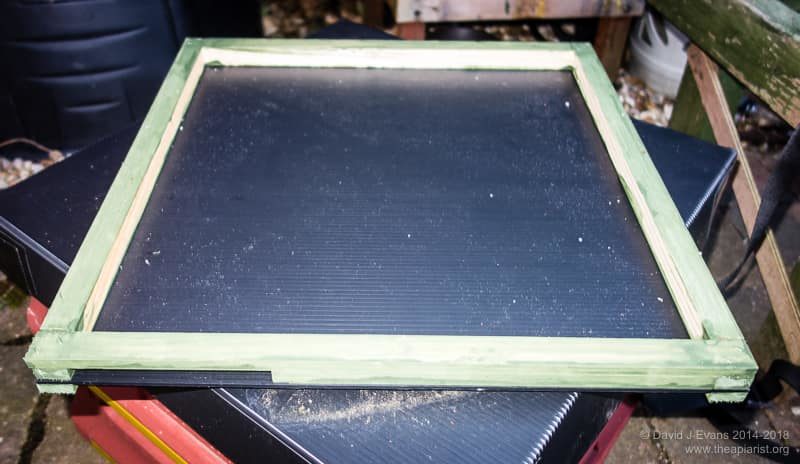
Cheapy, cheapy floor … when you’ve run out of everything else.
And if you’re really running short of kit drill a hole through the sidewall of an eke and place it on the roof of another hive i.e. no floor at all.
It’s critical the hole is about the diameter of the cork from a good bottle of red wine. This is essential. For obvious reasons … you do want to use it as an eke again sometime in the future 😉
Boxes
Two stacked supers are a bit deeper than a single brood box (National hive). If you haven’t run out of supers (yet … you will) they make a perfectly adequate substitute.

Two stacked supers, in this case set up as a bait hive. Note also the hive stand. And the roof.
Half of my bait hives are built from two supers.
As an aside, if you want to unite bees from these Paradise/Modern Beekeeping poly hives (see photo above) over the top of a standard National brood box, you’ll need a thin, wide shim to avoid bee-sized holes at the junction.
This shim wrecks the ‘bee space’ but it’s only in use for a few days so it isn’t a problem {{3}}.
Which, in a way, is the definition of the sort of quick fix I’m describing here … something that’s pressed into service for a relatively short period of time and that works satisfactorily, though perhaps not perfectly.
And is often still in use years later 😉
Crownboards
… though a (well washed) fertiliser sack works just as well and is even cheaper.
Roofs
Might not be necessary at all if you stack another hive on top (see above).
However, if they are then Correx roofs take some beating.
Literally.
These cost about £1.50 each to make, take minutes to build and are fully weathertight {{4}}. I’ve got several that are over 5 years old and still going strong.
Not a quick enough fix for you?
My bait hives were popular this year and I caught two swarms on successive days to a hive in the same location. I used an upturned planting tray for the roof of one of the bait hives and the bees didn’t seem to mind at all.
Incoming! from The Apiarist on Vimeo.
Clearer boards
Having planned to reduce my colony numbers this year I singularly failed to do anything of the sort.
I therefore ran out of clearer boards when I came to harvest the summer honey {{5}}. I could have made multiple trips to the apiary but solved it with a quick fix.
Undaunted, a combination of some 4 cm ekes, a sheet or two of Correx (of course), a bit of gaffer tape (what else), a ‘lozenge’ escape or two, a Stanley knife and the inevitable half a dozen Band-Aids … and voila!
These worked just fine and can be disassembled in minutes should I need the ekes again.
I’d bet good money they are used again next year …
etc.
To me, one of the great attractions of beekeeping is that it is an inherently practical occupation. In addition to the pleasure of working with the bees to produce a delicious, high quality and valuable product, you often need to use practical skill and ingenuity – coupled with Correx and gaffer tape – to solve day-to-day problems on the way.
For example, if you’re moving hives any distance it’s important they are well ventilated and that the frames don’t slide about with the consequent risk of crushing bees {{6}}.
Fibreglass net insect screening makes an ideal travel screen and is easily held in place with staples (in most poly hives) or an eke and a couple of stout straps.
And to stop the frames from sliding about a block or two of closed cell foam wedged between the hive wall and the dummy board is ideal.
This type of closed cell foam is regularly supplied in packing material and is well worth saving if you find any. It’s the perfect example of a ‘quick fix’ that solves a problem at little or no cost.
Of course , you can never have too much gaffer tape. A quick fix to wasp problems until you find the errant entrance block.
And finally … you can never have too many straps to hold hives together or hold roofs down.
But you can often have too few.
This photo was taken on the 14th of June, 2018. It looks balmy, but the windspeed was approaching 50 mph. I’d arrived to find some roofs already off {{7}} and too few straps to hold everything down.
There are two quick fixes in the picture. On the left a wooden plank holds the middle hive down with straps holding it (and the roofs on the flanking hives) in place. On the right, 25kg of fondant was press-ganged into service.
{{1}}: I’m going to write more extensively about this over the winter. However, for the moment I’ll refer you to a recent post by Emily Scott of Adventuresinbeeland. Spoiler … don’t believe the oft-quoted statements about The bees are all dying, we’re doomed”.
{{2}}: i.e. commercially produced, not commercial like National, Smith, Langstroth, Dadant etc.
{{3}}: Remembering also that a standard brood frame in a two-super brood box already plays fast and loose with the bee space!
{{4}}: But you will need a sheet of Kingspan- or Recticel-type insulation underneath for use in the winter.
{{5}}: Compounded I think by leaving one last winter at a beekeeping association where I was talking.
{{6}}: I’m more worried here about the released alarm pheromone and the stress this causes, coupled with the crushed corpses and disease risk, than of damage to the queen.
{{7}}: I still haven’t got round to writing a review of those Abelo hives, but the poly roof is easily lifted in gusty winds.

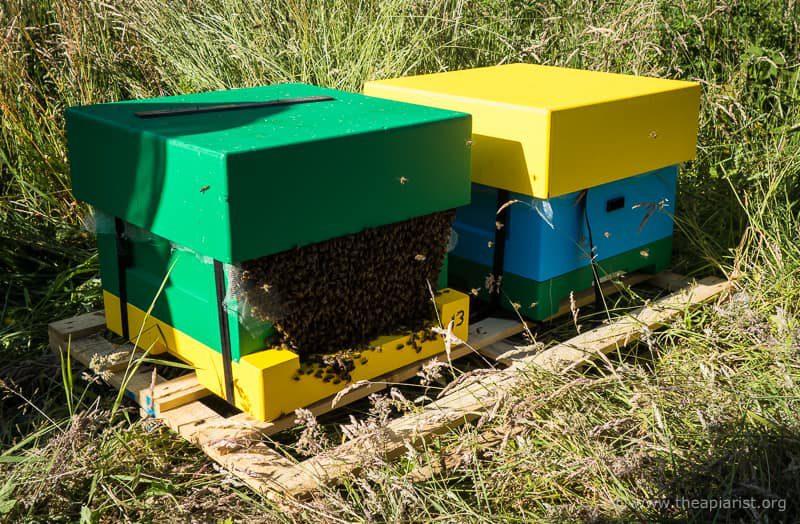
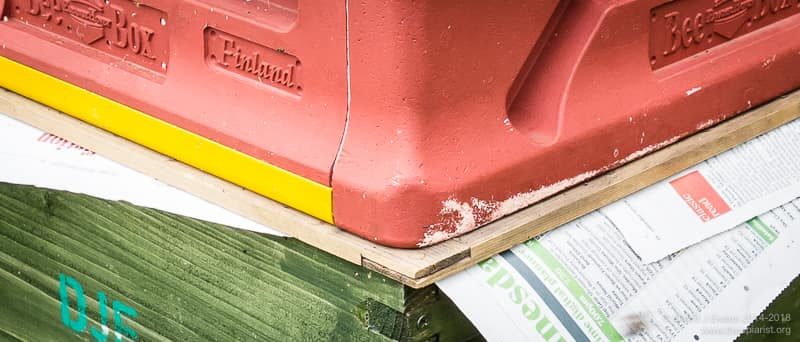
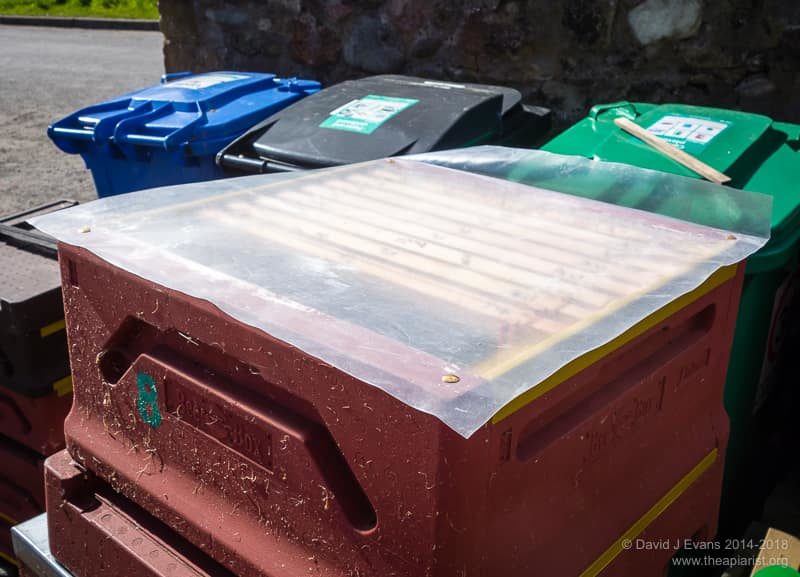
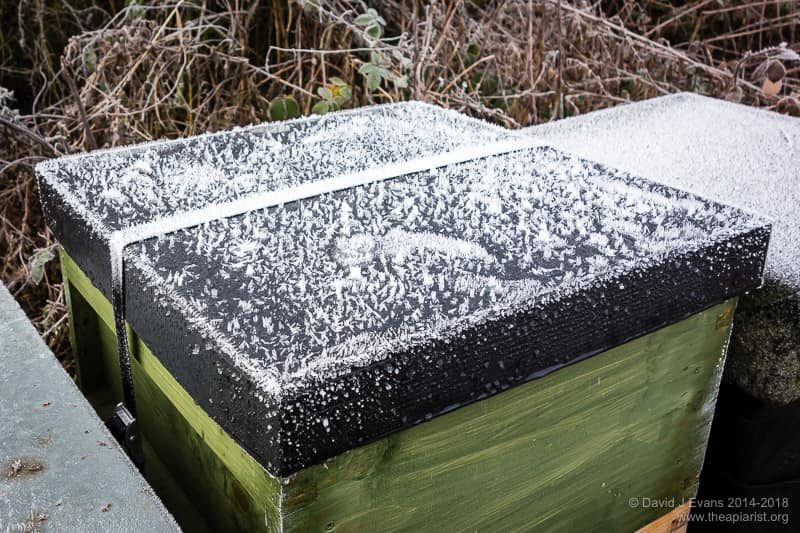
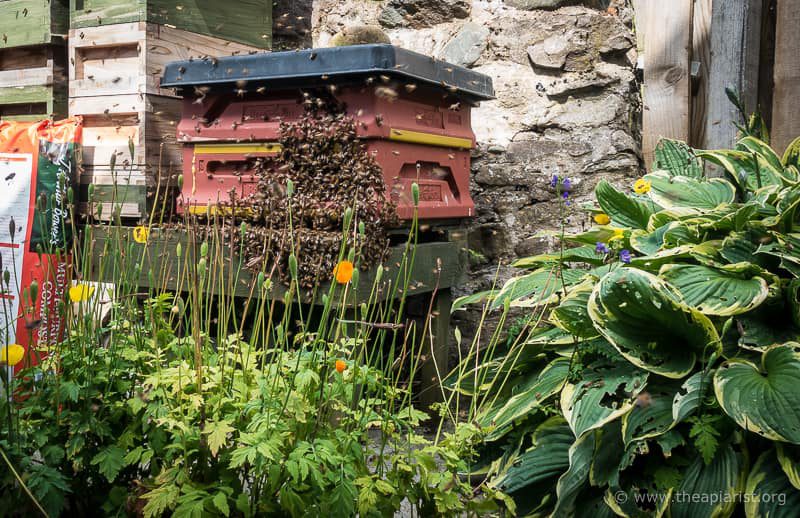
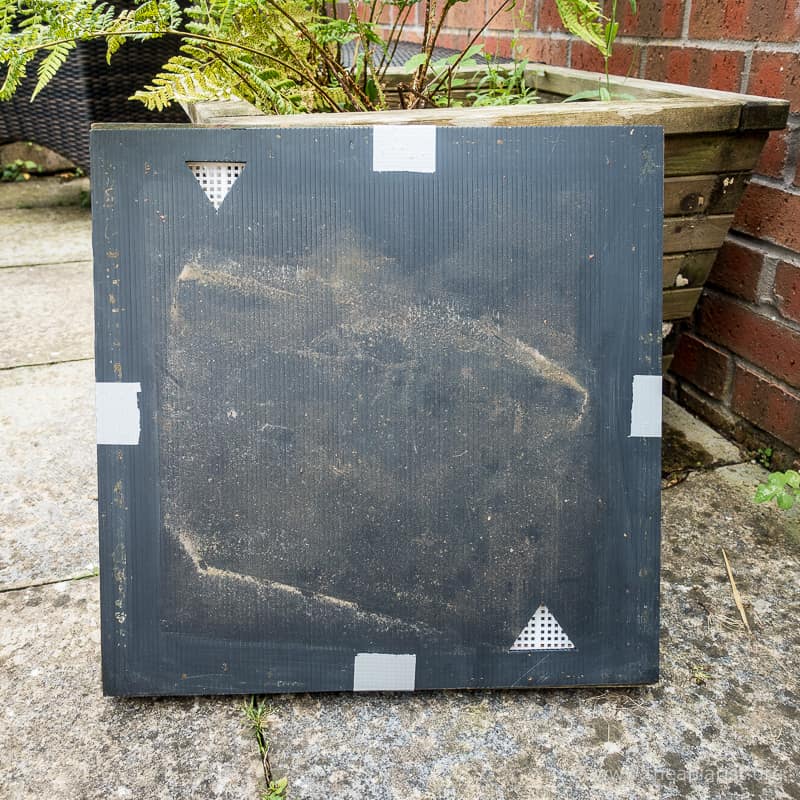
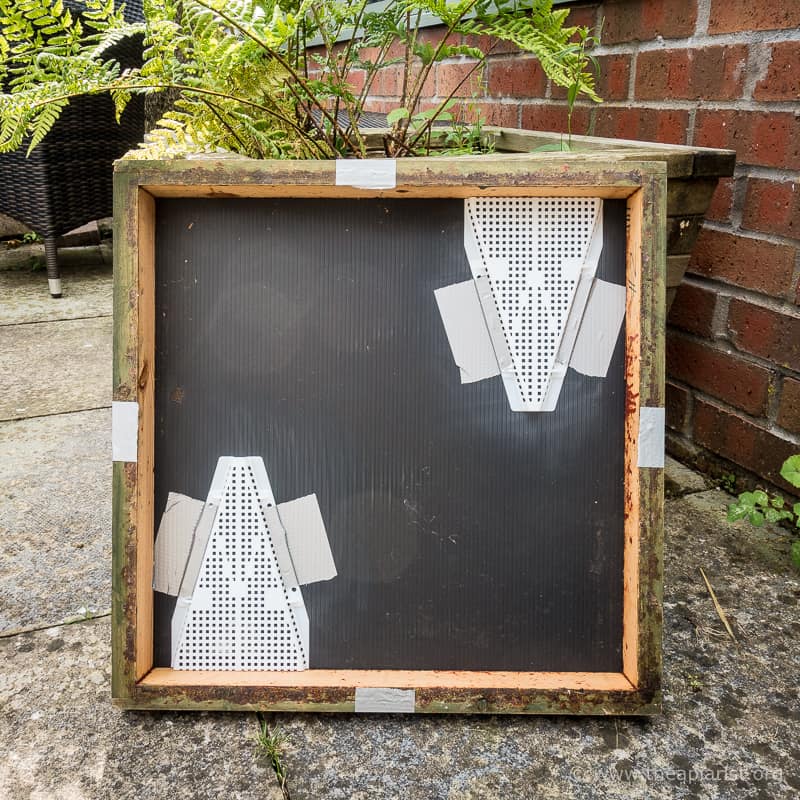
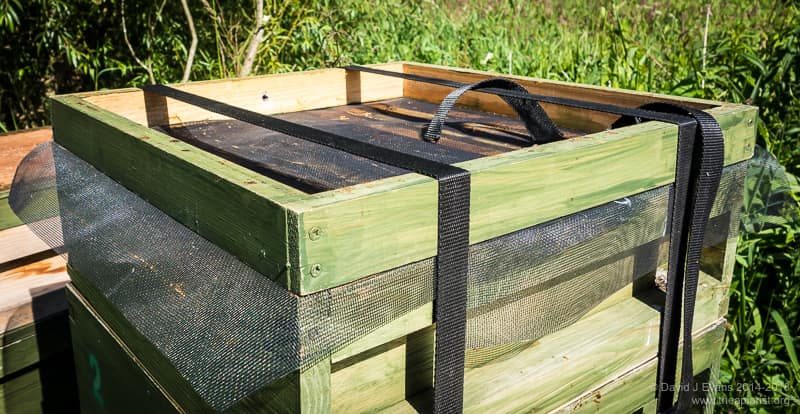
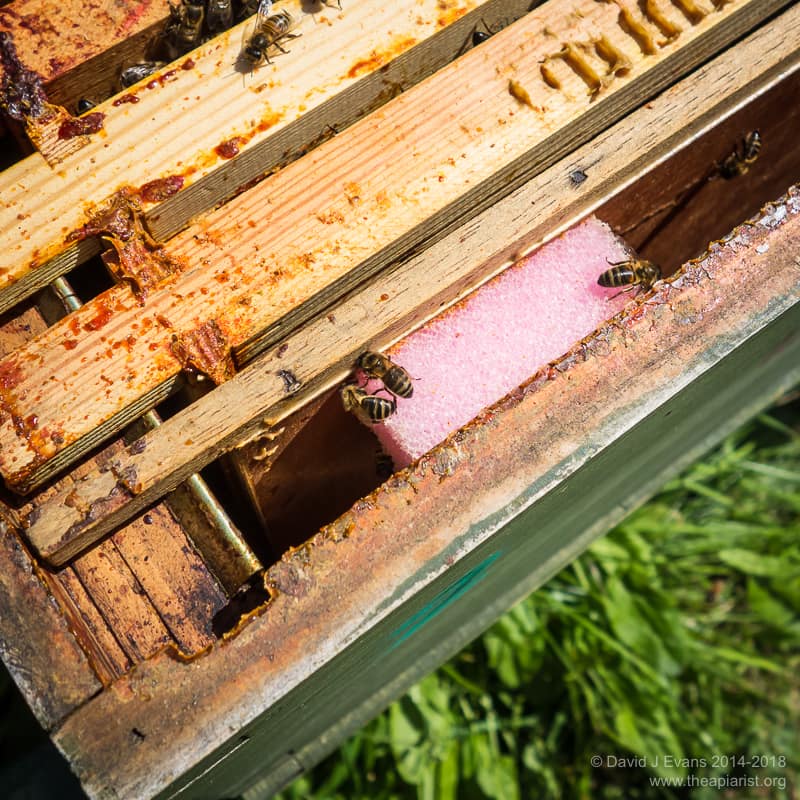

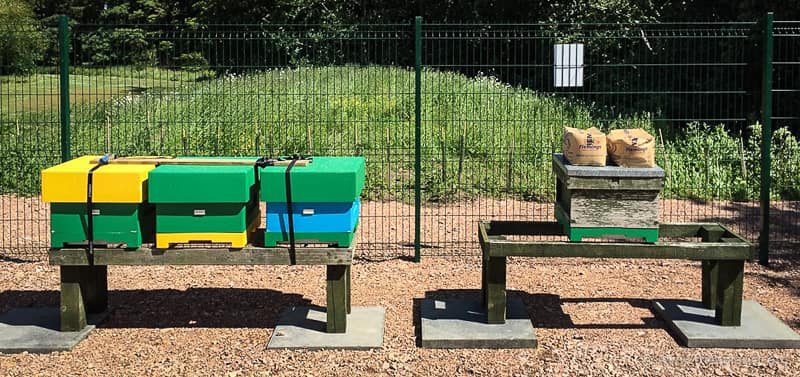
Join the discussion ...